Introduction: In this article – part of an ongoing “Introduction to Genealogy” series – Gena Philibert-Ortega describes the family history information contained in WWII draft registration cards – and where these cards can be found online. Gena is a genealogist and author of the book “From the Family Kitchen.”
The World War I Draft Registration is a familiar record set for most family historians, but it is not the only military draft registration available to researchers. Enacted in October 1940, over a year before the bombing of Pearl Harbor, the United States initiated a draft as tensions rose worldwide. The World War II draft registrations numbered six in total, but not all of those registrations are available to us – so it’s important to understand what is available and the information draft cards provide.
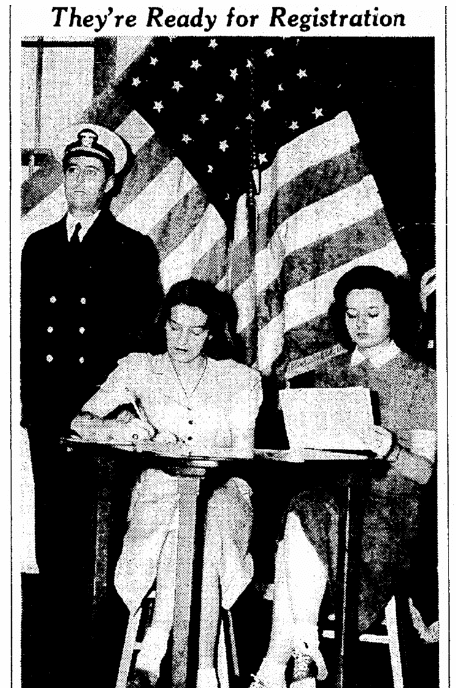
The caption for the above photograph reads:
“Patricia Robertson (left) and Elizabeth Sandoz, Newcomb college seniors and two of the scores of volunteer registrars who will serve today at selective service registration booths, look over the blank forms they will fill out for registrants. Lieutenant J. R. McCormick, U. S. N., of the Tulane Naval R. O. T. C. stands beside them.”
World War II Draft
On 16 October 1940 some 16,500,000 men across the United States showed up to their local draft registration board to “answer a series of 11 questions, sign their names and await the results of a lottery that will determine which of them must spend a year in military camps. All men between 21 and 35 years old, inclusive must register.”
Questions asked included “name, address, telephone number, age, place of birth, country of citizenship, name of person who will always know his address, his relationship to the latter, the address of the latter, his employer’s name, and his place of employment or business.” These double-sided draft registration cards also included questions about the registrant’s description (height, weight, race, complexion, color of eyes and hair) as well as space to write in any other identifying characteristics.
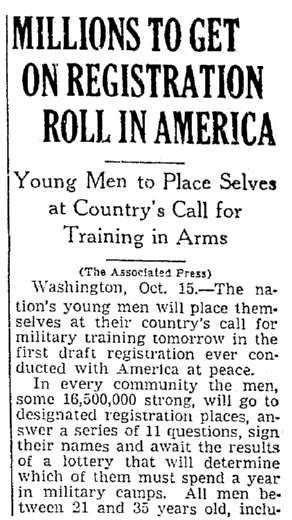
This draft was unique in that it was a peacetime draft done in anticipation of needing men for military service. From 1940, depending on a man’s age, they would have been required to register at a specific time over the next six years. This information was printed in local newspapers, along with maps and addresses for the local Selective Service Board.
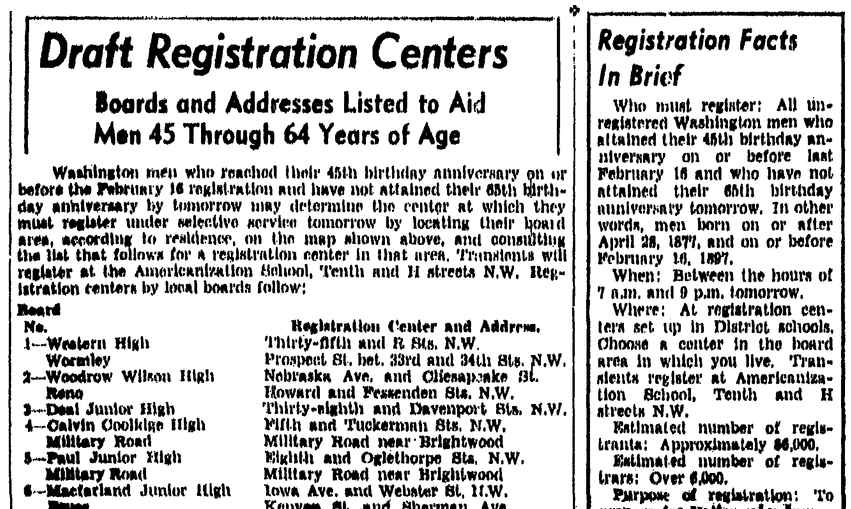
A map showing “the city’s Selective Service Board areas which will be served by registration centers tomorrow” accompanied this article.
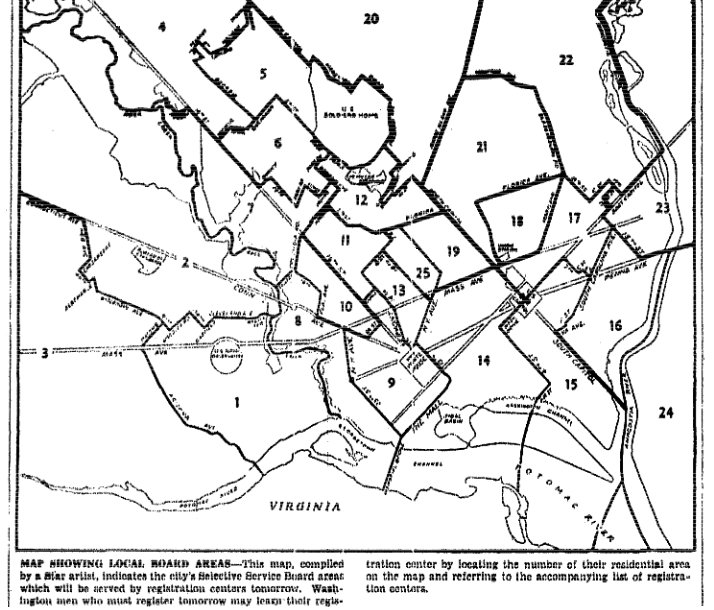
All men not currently serving in the military were registered, regardless of their citizenship status. After the incarceration of Japanese Americans in internment camps, they were also registered in subsequent drafts.
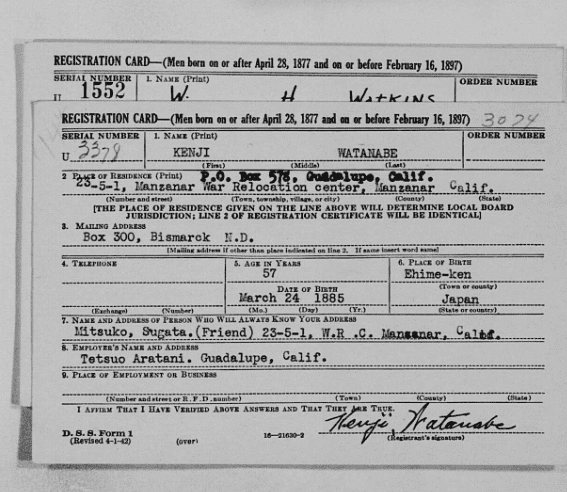
“The Old Man’s Draft”
The fourth registration, more commonly known as “The Old Man’s Draft,” registered men between 45 and 64 years of age, with birthdates of 27 April 1877 to 16 February 1897. This registration was held on 27 April 1942 and was not meant to recruit men for military duty, but rather to ascertain manpower for national service.* All men were registered no matter their civilian job. Even President Franklin D. Roosevelt and New York Mayor Fiorello H. La Guardia filled out draft cards during the three-day registration of “oldsters.” This San Diego newspaper article about the registration estimated that 13,000,000 men in total were registered during the fourth registration.
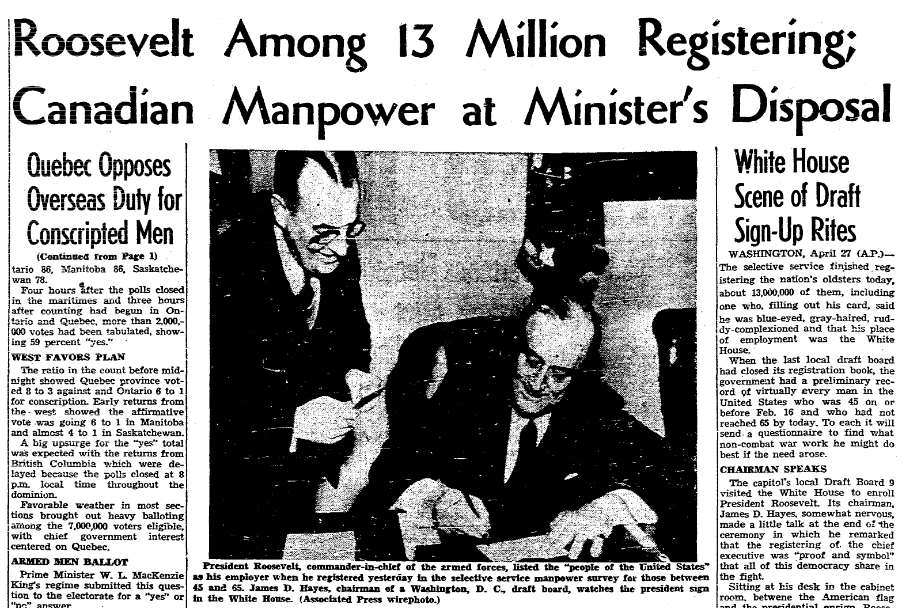
For family historians, “The Old Man’s Draft” is important because it is the only complete World War II draft registration available online. If a registration card is available for your ancestor, it can help you verify where your ancestor was in a specific place and time. You can also use this draft registration with your ancestor’s World War I draft registration as you track his life. These “old men” would have filled out draft registration and/or served during World War I.
Accessing “The Old Man’s Draft”
Researchers have online access to almost all of “The Old Man’s Draft.” However, some of the draft cards were destroyed prior to microfilming. The state cards that were destroyed are:
- Alabama
- Florida
- Georgia
- Kentucky
- Mississippi
- North Carolina
- South Carolina
- Tennessee
FamilySearch has an index and images for “The Old Man’s Draft.” These cards include the Territory of Puerto Rico. For more information about what is covered, see the FamilySearch Family History Research Wiki page United States, World War II Draft Registration Cards (FamilySearch Historical Records).
Draft Registrations prior to 1960 are held by The National Archives. For more information about World War II draft registrations and ordering copies, see The National Archives at St Louise Selective Service Records page.
————————
* “United States, World War II Draft Registration Cards (FamilySearch Historical Records),” FamilySearch Family History Research Wiki (https://www.familysearch.org/wiki/en/United_States,_World_War_II_Draft_Registration_Cards_(FamilySearch_Historical_Records): accessed 4 September 2017).
Related Articles:

During World War II, what were the selective service rules about a person who moved? My father was living and working in a farming community when he registered. About 1 year later, he moved to a larger nearby city because he received a job promotion. About 3 years later he was drafted based on the farming community. Did he fail to change his address? Was he required to keep his registration in the farming community since he wasn’t farming? My mother always said he was drafted as a married man at age 31 since so many of the farm boys were exempt. I have not been able to find anything about this issue on the internet.
Cheryl, my understanding is they would need to provide their address each and every time they moved. I know my grandfather’s draft card includes 3 different addresses. But you could look at original law requiring the draft and newspapers. Historical newspapers do provide answers to questions about the draft when it was implemented.